Hiking a long distance requires stability, mobility, endurance and strength—and that’s just on the way up! If your clients are interested in hiking, here are three essential components to include in their workouts:
- Although moving forward and up uses primarily sagittal plane movements, including rotation (and anti-rotation) and frontal plane actions can help build a strong, stable body capable of managing long treks and navigating changes in terrain.
- Be sure to include the five primary movement patterns as discussed in the ACE Integrated Fitness Training® (ACE IFT®) Model: push, pull, rotate, bend and lift, and lunge.
- Remembering that what goes up must come down, incorporating eccentric training in the lower body is essential for keeping the lower body healthy and injury free on the way back down the mountain.
The following workout, outlined in the table below, features these program variables. Use the guidelines to design workouts that best suit the training time, equipment available and goals for the hike (whether yours or your client’s). Want to be able to reach the summit faster? Choose an exercise from the stability and mobility lines and then perform all the exercises listed in the strength row. Going for a very long hike? Perform all of the stability and mobility exercises and at least two exercises from the endurance row. Only have 30 minutes? Pick one exercise from each row and column. Complete the chosen workout at least twice a week and be sure to select new exercises each time.
These exercises were chosen with an aim to keep the ankles, knees and hips healthy, as well as maintain strength in the trunk over long-duration training. To improve the health of the fascial system and work through any soreness that may come from training both in the gym and on the mountain, don’t forget to include some self-myofascial release after each workout. Areas to focus on when foam rolling include the IT band, the peroneals, calves and vastus medialis obliques to keep the knee joints healthy and tracking properly. Glutes and back should also be rolled to help maintain low-back health and stability in the trunk.
|
|
Push |
Pull |
Rotate |
Bend and Lift (squat) |
Single Leg (lunge) |
|
Stability 1-2 sets, 30 seconds |
Plank |
Mini-band Reach |
Lateral bird dog |
Glute bridge |
Star touches (AirX pad) |
|
Mobility 1-2 sets, 30 seconds |
Scapular Push-ups |
PVC ROM upper body |
Table-top rotation (thread the needle) |
Hip circles |
Walking single-leg hip hinge |
|
Strength 2-6 sets, 1-6 reps |
SB prone runner |
Side plank overhead row with knee drive |
Transverse sliding lunge |
Walking DL |
DB lateral box hop |
|
Endurance 2-3 sets, 12+ reps |
Push-ups |
Falling hamstrings |
Pallof press |
Back squat (eccentric) |
DB lateral lunge
|
1. Mini-band reach
Place a loop band around the wrists. Hold the arms in front of the body with the elbows bent at 90 degrees. Palms should be facing each other. Keep the forearms parallel to each other (with tension on the band) and begin to slowly bring the hands upward, keeping a 90-degree bend in the elbows. When the upper arm is at the level of the shoulder, begin to extend the elbows and raise the arms overhead. Slowly return back to the starting position. Throughout the movement, keep the forearms parallel to each other with tension on the band.

2. Star touches
Stand on an AirX pad with one foot and perform a single-leg squat (to whatever depth is comfortable while maintaining balance). Each time the standing leg bends, direct the free leg to different points around the body, creating a star pattern: forward, across, side, behind, across behind. Stay controlled through the movement, but return to standing after each rep to challenge stability in the ankle, knees and hips. If you do not have access to an AirX pad, a BOSU, Balance Board or shoes off are acceptable alternatives.
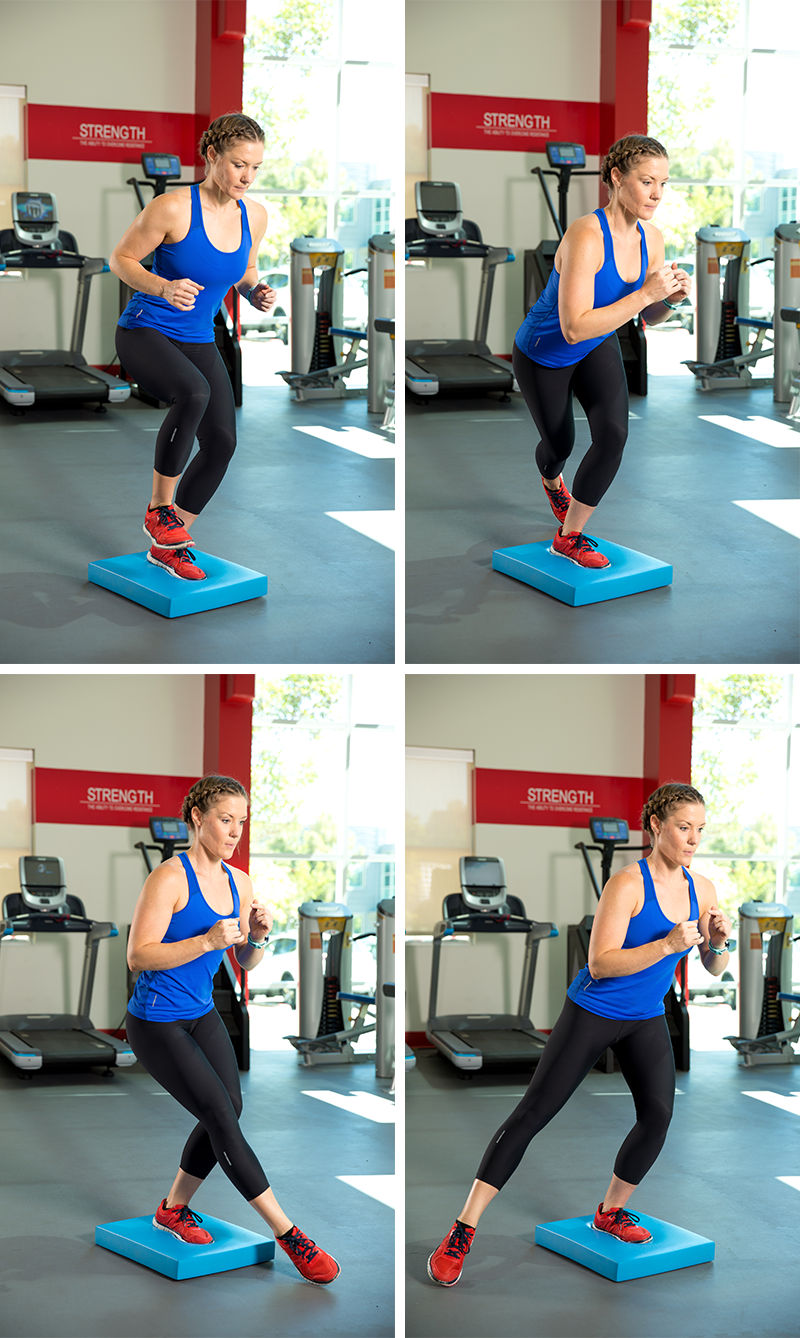
3. Scapular push-ups
Assume a high-plank push-up position (perform on the elbows for those with wrist issues), keeping the arms straight and trunk engaged. Allow the chest to drop between the arms, while maintaining the body’s alignment. Press back through the hands (or elbows) and bring the chest away from the floor, allowing the shoulder blades to separate on the back. This action should be an up-and-down movement within the shoulder girdle, not forward and back.
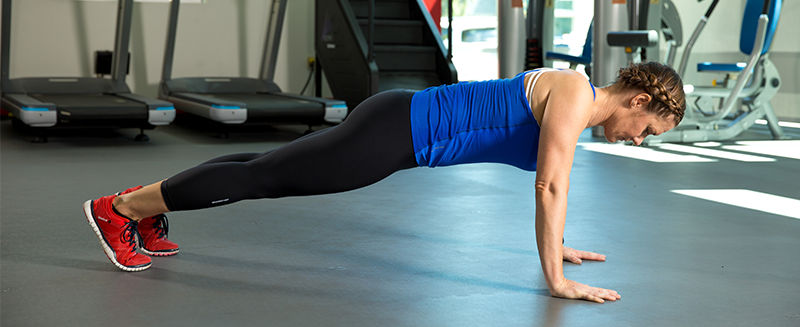
4. Walking single-leg hip hinge
With the arms extended in a T-shape, lift one foot off the floor toward the back of the body. Keep a slight bend in the standing leg and hinge forward from the hips, keeping a straight line from the head to the back foot. Hinge only do far forward that the hips do not begin to rotate and the spine can remain straight.
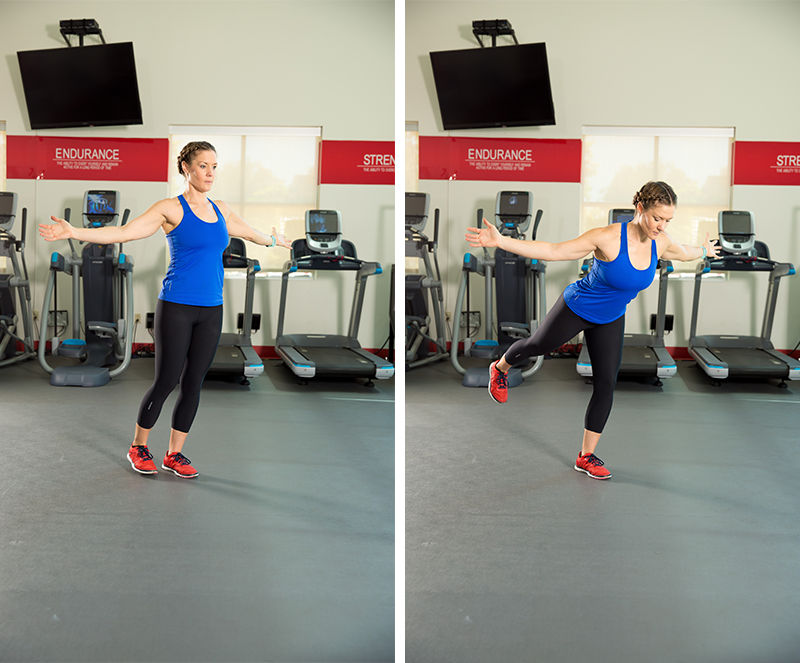
5. Stability ball prone runner
With the feet on a stability ball and hands on the floor in a push-up position, release one leg and bring it under the chest. Maintain a strong upper body and rock the hips up, bringing the ball forward by bringing the knee to the chest. At the same time, extend the free leg behind the body. Perform a running action, returning the starting position with one knee under the chest. To modify the movement, simply hold the running position with one knee off the ball and hovering below the chest.
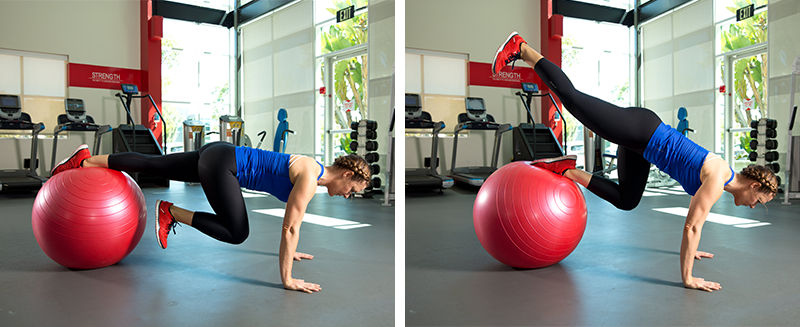
6. Transverse sliding lunge
Place a slider (or a paper plate, towel or sock) under the left foot and keep the right foot stationary. Bend the right knee and sit back into a squat while simultaneously opening the hips to the left and sliding the left foot out straight to an 8 o’clock position (the right foot stays pointed straight ahead at 12 o’clock). Return to the starting position; switch legs after the desired number of reps have been completed.
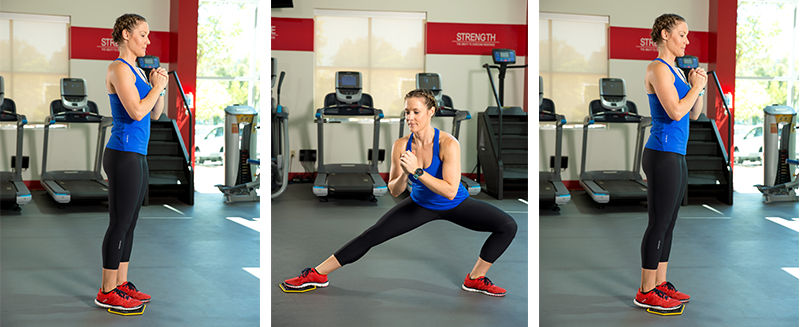
7. Walking single-leg deadlift
Using dumbbells or a barbell, engage the trunk and hinge forward from the hips as you take small step forward with one foot. Your weight will come off the back foot as you hinge over the forward leg. Engage the glutes and hamstrings as you stand and repeat, taking a step forward with the opposite foot. Continue for the desired number of repetitions.
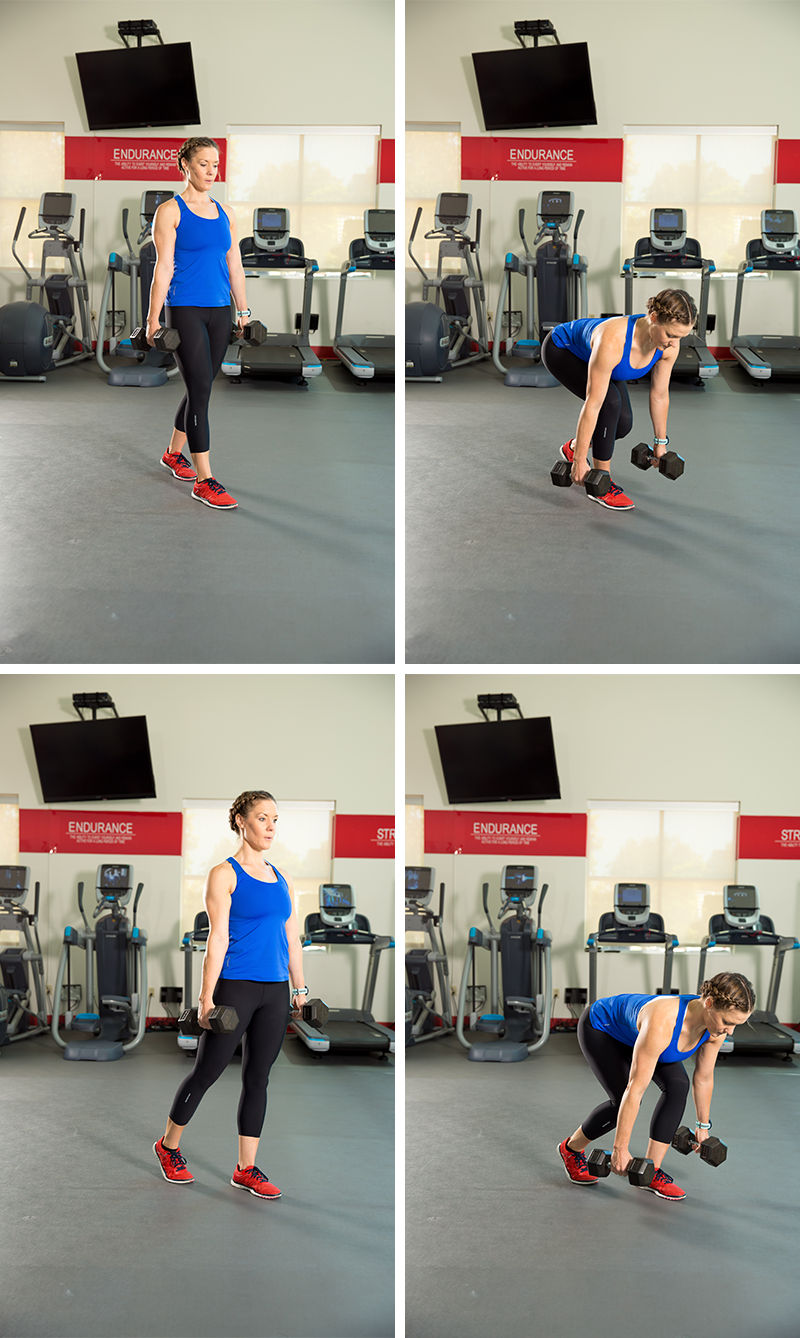
8. Falling hamstrings
Place padding under the knees and begin in a tall kneeling position. Ask a partner to hold the lower legs or lock the heels under a stable bench or rack. Slowly hinge forward from the knees, keeping the trunk engaged and without flexing the hips. Hinge forward until tension is felt in the hamstrings and return back to the starting position; be sure to maintain the position of the shoulders over the hips.
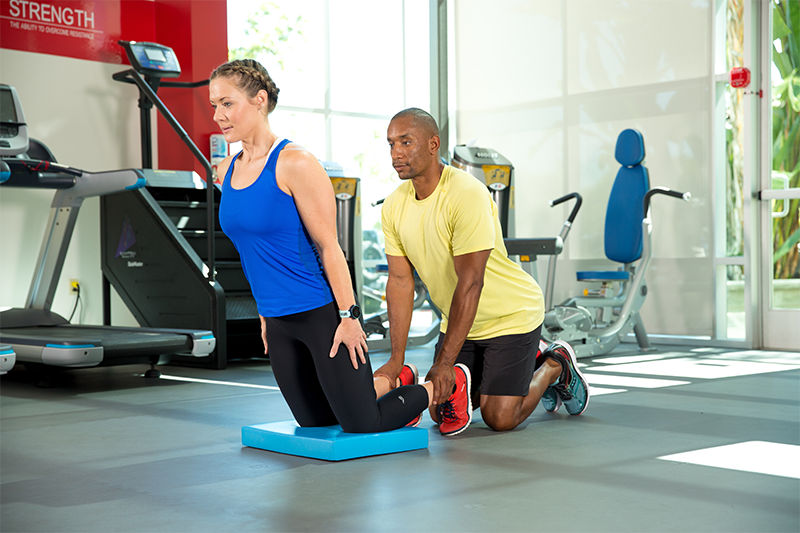
Deliver the individualized programs people need to adopt long-term, healthy behaviors with ACE’s Personal Trainer Certification.




 by
by 



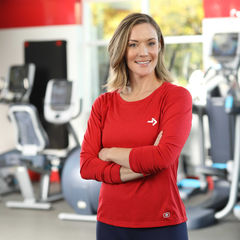






 by
by